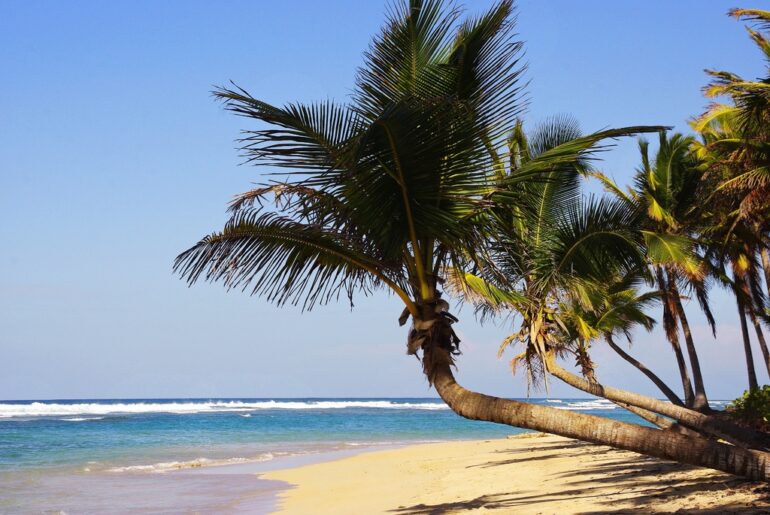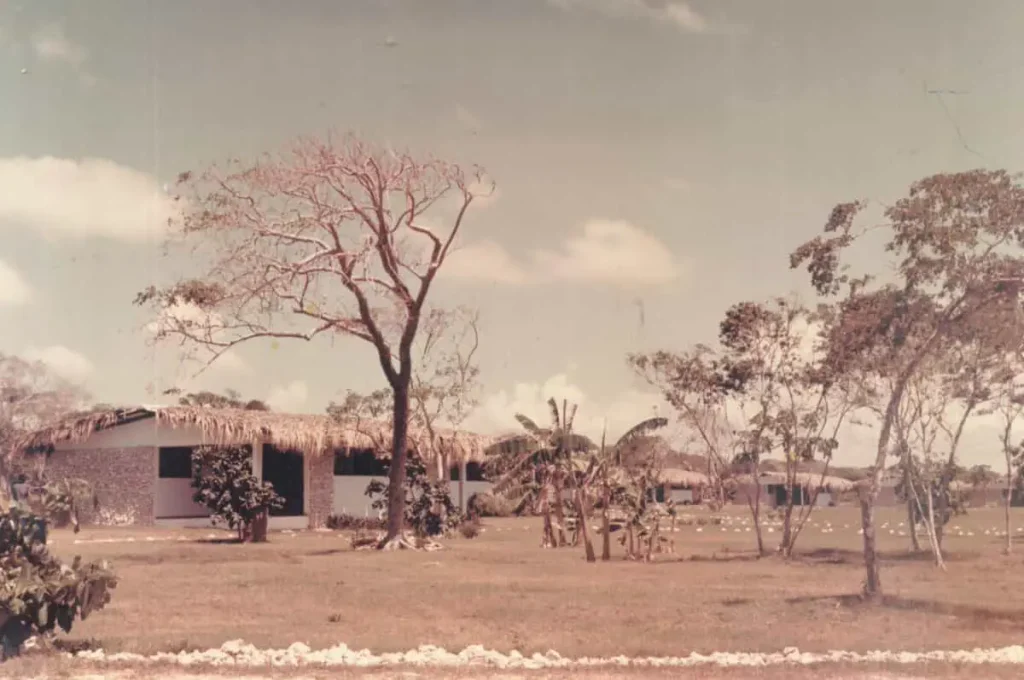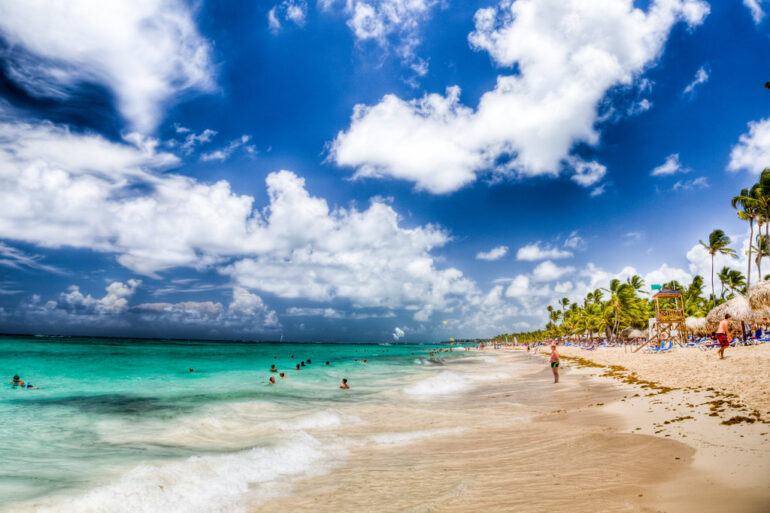What does Punta Cana mean? Punta Cana is a Spanish term that means “tip of White Cane Palms” or “the peak of the palm tree”.
Punta Cana is a region situated in the easternmost part of the Dominican Republic. There is also a luxurious resort town with the same name. With its sparkling water, pristine white beaches, and abundance of palm trees, it is considered a popular tourist destination in the Dominican Republic.
Origin Of The Name
The name Punta Cana comes from two Spanish terms “Punta” and “Cana” and it is pronounced “Poontah Caanaa”
“Punta” means tip or peak which refers to the geographical position of the area at the tip of the Dominican Republic.
“Cana” means cane which refers to the cane palm trees or white palm trees that are greatly abundant in the area. These trees are a very important part of the local culture due to their usefulness. The natives often use them to make the roof of their houses.
Now Punta Cana didn’t have the same name from the beginning. It had two other names in the past.
The first occupant of the land were Taino Indians. They named the place “Yauya”, which was one of the first names of Punta Cana and also one of the longest-lasting names. They also called an underground river that was located in that region with the same name.
Another earliest name for the town was Punta Borrachón. The locals gave the town its name which means “Cape Drunkard” or “Drunkard’s Point”
Then finally in 1971, a Dominican businessman and a New York attorney decided to turn the area into a vacation resort for travelers from all around the world.
As for the commercial name of the location, they found Yauya difficult and hard to pronounce and Punta Borrachón uncomplimentary. So they ultimately decided to base the name on the location of the area and the tropical cane palm trees and rename it “Punta Cana”. It is also the name of the first resort built in that place, Puntacana Resort & Club.
Punta Cana

With both the Caribbean Sea and the Atlantic Ocean at its border, Punta Cana is located on the easternmost tip of the Dominican Republic and is part of the Cana-Bávaro-Veron-Macao municipal district, in the municipality of Higüey of La Altagracia Province. It is a shoe-like shaped country.
Punta Cana has an area of about 420,000 m² (approximately 1,100 acres) with 30 miles of shoreline and beaches and an estimated population of 100,000.
It borders the village and beach of Cabeza de Toro, the Bávaro and El Cortecito beaches to the north, and to the west with Juanillo. Punta Cana & the Bávaro in the union is called “La Costa Del Coco” or the coconut coast.
Punta Cana has a tropical wet and dry climate with an average temperature of 26°C (79°F). The hottest season starts from April to November and the temperature drops from December to March. It is a flat landscape with very little rainfall.
The official language of the Dominican Republic is Spanish. English and many other languages are also spoken in common tourist areas.
History & Development Of Punta Cana

It all started in the late 1960s when a pair of investors, Frank Rainieri, a Dominican entrepreneur, and Theodore Kreel, a powerful New York attorney came across the thick forbidding jungle and miles of beautiful sandy beach with crystal blue water at the easternmost part of the Dominican Republic and immediately saw its potential.
The area was Punta Cana and it was still an undeveloped coastal area of La Altagracia province. The two investors decided to turn it into a luxury vacation destination. In 1969, they bought 30 square miles of the area and built their first hotel, Punta Cana Club in 1971. It was a small 40-guest hotel.
But access to Punta Cana at that time was really hard as the closest major city, Higüey was at least 5 hour drive. And the access to the hotel was only a dirt airstrip for small planes.
They also decided to change the name from Punta Borrachón to Punta Cana in 1970 as the former was considered derogatory and uncommercial.
In 1978, the Paris Mediterranean Club joined the Group Panta Cana SA Project and build a 350-room hotel. But the transportation was nevertheless complex. So, Colgate, the toothpaste company started connecting the area by constructing roads and lowering the commute time.
With the newly built roads and expanding resort business, the investors finally got the Dominican government’s permission to build a commercial airport. In 1984, the Punta Cana International Airport was inaugurated.
As the transportation facilities got better, more tourists and visitors started to spend their vacations on the mesmerizing beaches and palm trees of Punta Cana
FAQs
Q: What is the currency of the Dominican Republic?
The currency of the Dominican Republic is the Dominican peso.
Q: What is the cheapest month to visit Punta Cana?
January is usually the cheapest month.
Q: Is Prostitution legal in Punta Cana?
Prostitution is legal in the Dominican Republic but pimping or brothel is illegal.
Q: What is the legal age for drinking in the Dominican Republic?
18 years.
